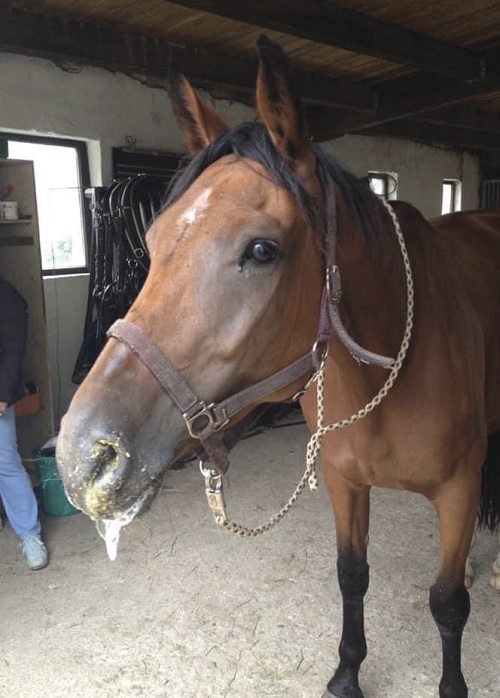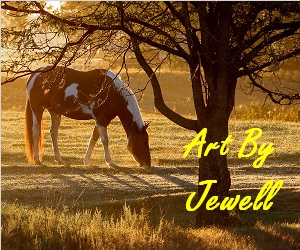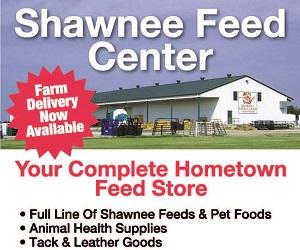Signs, Causes, Treatment & Prevention

WRITTEN BY: Grace Owen, DVM
Equine Medical Associates | Edmond
Choke in horses refers to an esophageal blockage that is usually caused by food material. It is most common in older horses with poor dentition but can occur in any age category. Unlike humans, when a horse is choked, it can still breathe but is unable to swallow. Horses are often able to clear the blockage on their own, but some will require further intervention. In addition, aspiration pneumonia can be a serious consequence. Learning to recognize the signs and causes of these episodes can help owners manage their horses better.
Horses generally choke on pelleted type feeds, alfalfa pellets or alfalfa cubes. The horse will take a large bite of one of these, and it will become lodged in the esophagus. Once stuck, saliva will hit the blockage and cause the feed material to expand. Once expanded, the feed is firmly lodged, and the esophagus may start to spasm and constrict around it. Some horses also continue to eat more feed at first and create a larger blockage.
Signs that your horse may be choked include coughing and retching while eating. Horses generally stop eating feed and may walk off or roll, which is often confused with colic signs. Often, saliva and feed material will come out of both nostrils. Some horses may sweat and be very fractious; others may be very stoic.
Frequently, horses can clear chokes on their own. If you suspect your horse may be choking, monitor him or her closely. While you are watching, you can gently massage the left side of the neck to help relax esophageal spasms. If the horse continues to show signs, your veterinarian may need to be involved. On arrival, the veterinarian usually administers a smooth muscle relaxant and a sedative. The sedative helps to keep the patient’s head lower, which is important for reducing the chances of aspiration pneumonia. A nasogastric tube is then carefully placed into the esophagus to the level of the blockage. Warm water is gently lavaged through the tube. The blockage is gently reduced until the tube can be passed into the stomach.
In most cases, this procedure goes smoothly. In some cases, patients may get a bloody nose from irritation by the tube. In rare cases, usually when the choke has been present for a significant amount of time and is friable, the esophagus can be damaged, which can be life threatening.
During the choke, as well as while it is being resolved, there is a chance that aspiration can occur. Aspiration occurs as the horse breathes in excess saliva and feed material that is unable to pass through the blocked esophagus. These materials can settle in the lung and create pneumonia. To prevent this condition, the horse should be started on antibiotics. It is also important to monitor their temperature and respiratory rate over the next week.
After resolution, it is important to let the esophagus rest. Depending on duration of choke and difficulty of resolving it, food may need to be withheld for up to 24 hours. When started back, it is best to provide soaked feed and slowly add in drier feeds, such as hay.
There are several things that can be done to help prevent choke. The first is to make sure a proper dental has been done. Sharp points and abnormal chewing surfaces can prevent proper chewing and create chokes. Most horses choke on pelleted foods due to taking a large bite, which gets stuck in the esophagus. By spreading the feed out in a bigger pan or adding a salt block they have to eat around, their ability to eat quickly may be reduced. In addition, either soaking the pellets prior to feeding or using a grain product that can’t swell to reduce chokes may be beneficial.
Talk to your veterinarian about proper dental care and ways to help reduce chokes in your horse.

